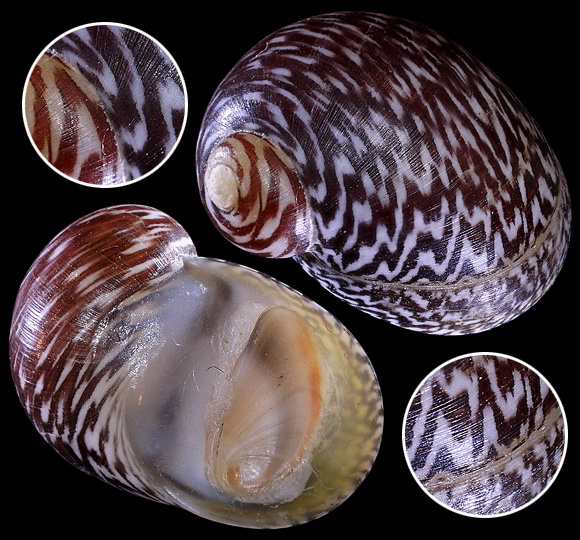
Southern Iberian Peninsula and Baleares to Balkanic region, SW. Anatolia, Sicilia, NW. Tunisia – vanishing in Tunisia. Grazer, on stones and rocks. Original taxon: Neritina baetica. Many synonyms: elongatulus, guadianensis, meridionalis, varius, velascoi… also callosus according to Sands & al., 2020. – Above, a large specimen collected under stone, Barranco Gomar, Bicorp, Comunidad Valenciana, E. Spain. 11mm.
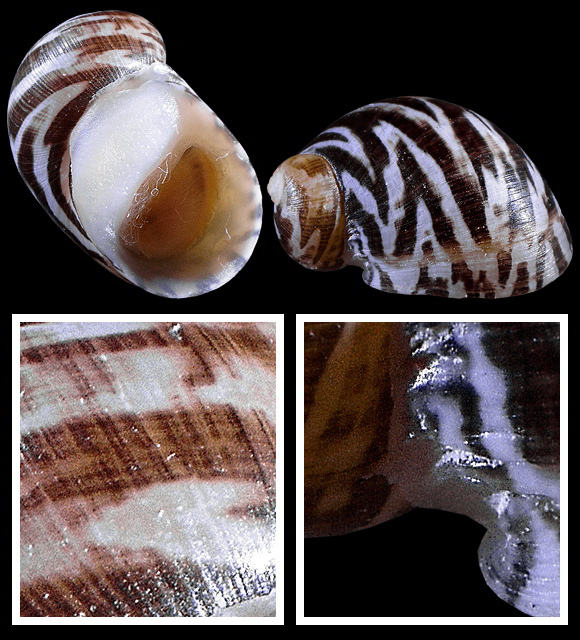
The species is highly variable in all its conchological characters, as it has been revealed by Sands’s studies conducted at the turn of the century, which have concluded to a very important synonymy (but Th. callosus will continue to be considered here as a valid species).
Above, a specimen collected under rock at Alzira, Comunidad Valenciana. 8,5mm. This is the variant ex-forma “elongatula” Morelet, who writes: « The summit of this Neritine is rounded and protruding; the last whorl is narrow and elongated; the aperture is small, oval, tapering inside; the outer edge flexes a little before its insertion; the inner edge produces a convex callus of a fairly bright pearl-gray or yellow color. The test is smooth, polished and very shiny; white or yellowish with black, purplish, or dark red lineoles. […] The operculum is greyish, striated, bordered on the upper side with a very bright red area, marked with a bluish spot at its internal angle. Its apophysis is very strong. » – A. Morelet: Description des mollusques terrestres et fluviatiles du Portugal, Paris 1845, p.96.
Above, a specimen collected under rock at Alzira, Comunidad Valenciana. 8,5mm. This is the variant ex-forma “elongatula” Morelet, who writes: « The summit of this Neritine is rounded and protruding; the last whorl is narrow and elongated; the aperture is small, oval, tapering inside; the outer edge flexes a little before its insertion; the inner edge produces a convex callus of a fairly bright pearl-gray or yellow color. The test is smooth, polished and very shiny; white or yellowish with black, purplish, or dark red lineoles. […] The operculum is greyish, striated, bordered on the upper side with a very bright red area, marked with a bluish spot at its internal angle. Its apophysis is very strong. » – A. Morelet: Description des mollusques terrestres et fluviatiles du Portugal, Paris 1845, p.96.
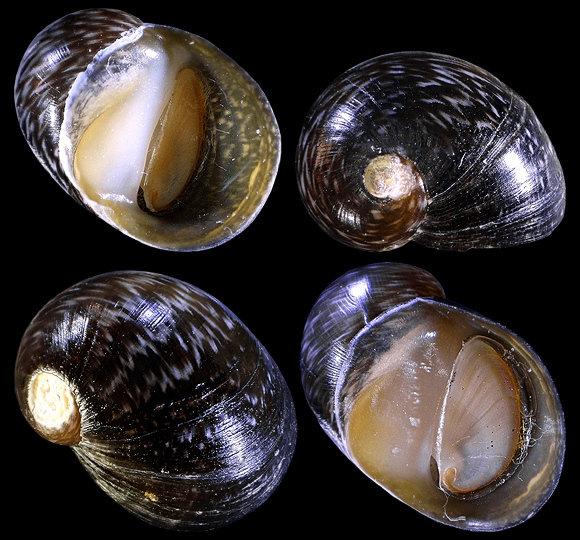
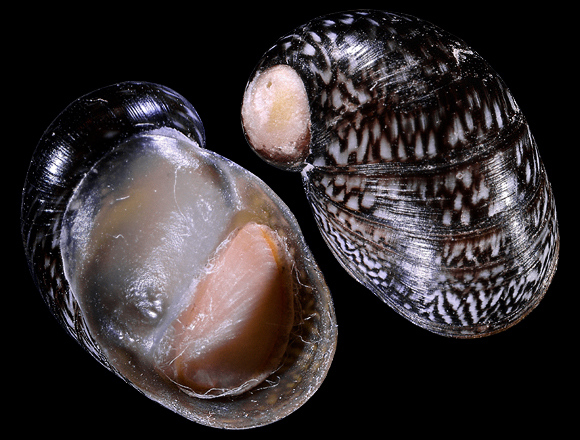
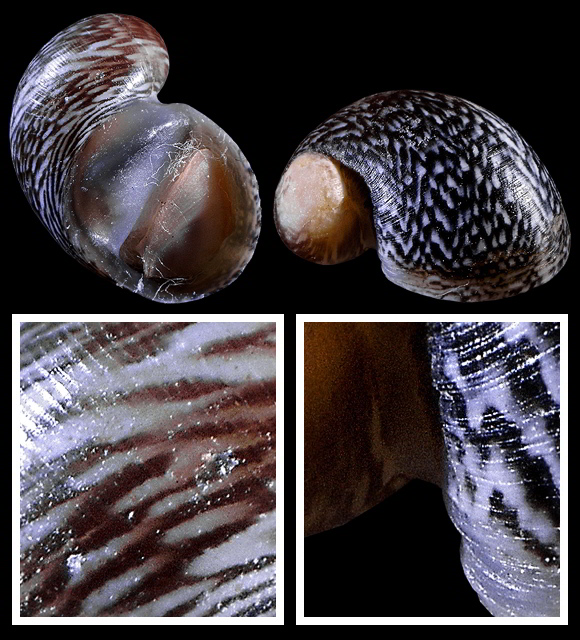
Under stone, Orce, Granada, Andalucia, S. Spain. 9,1mm.
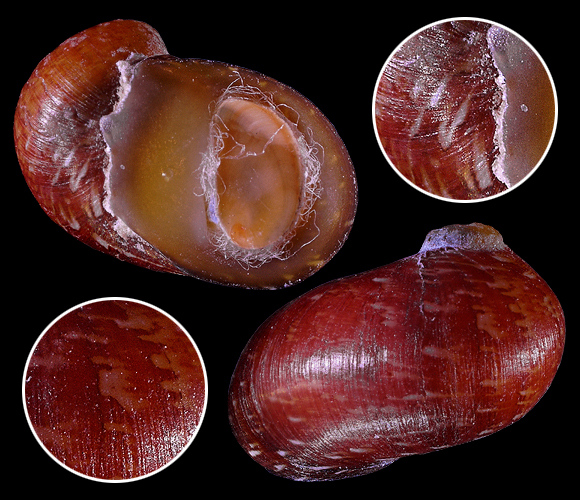
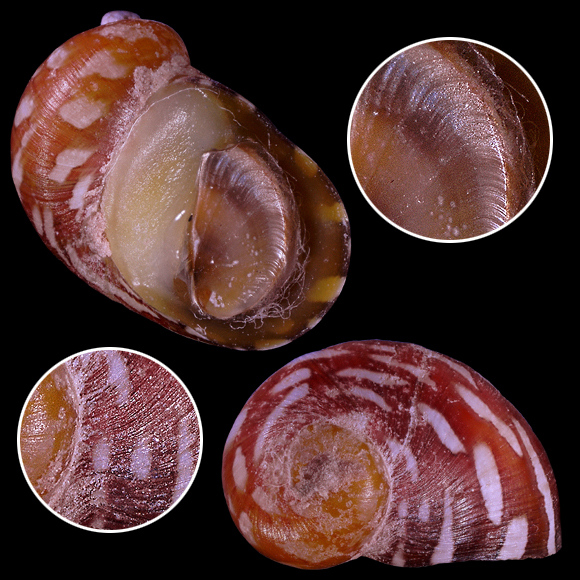
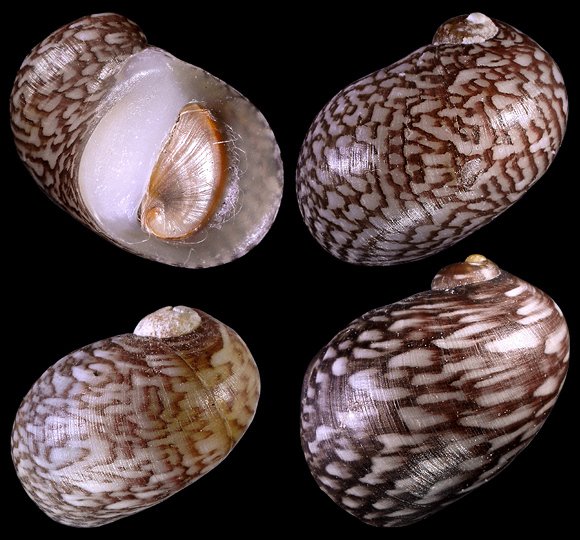
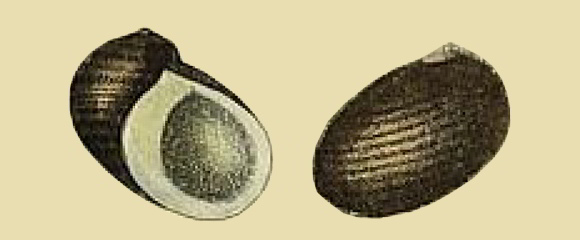
« Shell fairly spherical, fine and densely striped, shiny, dark brown, with narrow, little visible dark ribbons. Spire prominent, mostly eroded, the eroded places white; penultimate whorl bulbous; suture simple, very low anteriorly. Mouth rather oblique, half-shaped, gray inside, blackened, the upper margin a little less curved than the lower margin, columellar plate edentulous, rather straight, columellar margin even, rather narrow, fine, bluish, clearly bounded behind in a flat arch. » – op. cit. p.234. On the drawing, the dark ribbons are spiral, a feature that rarely occurs.
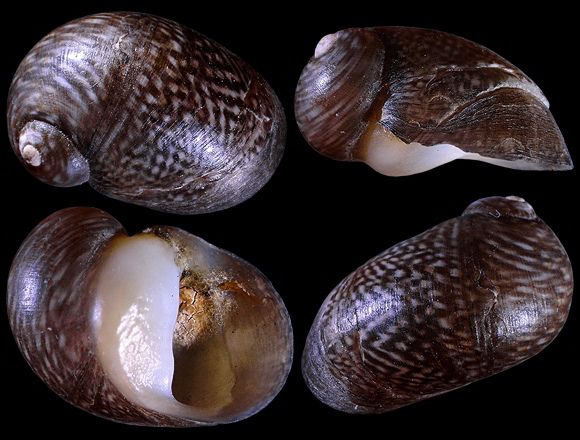
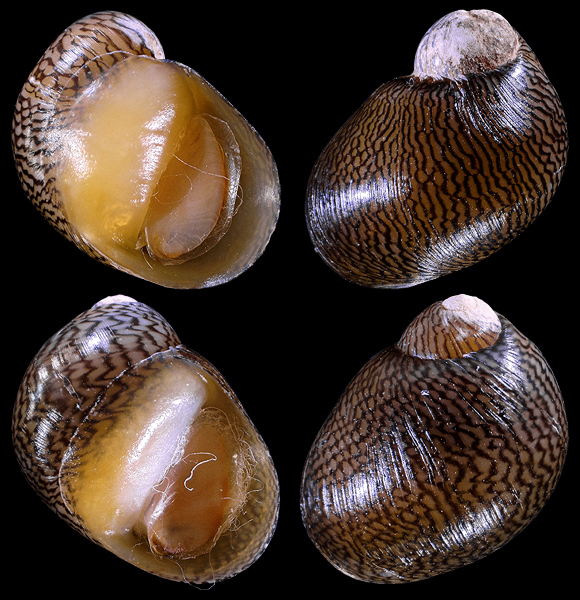
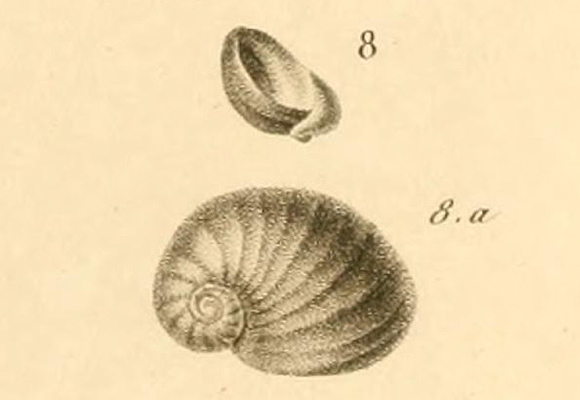
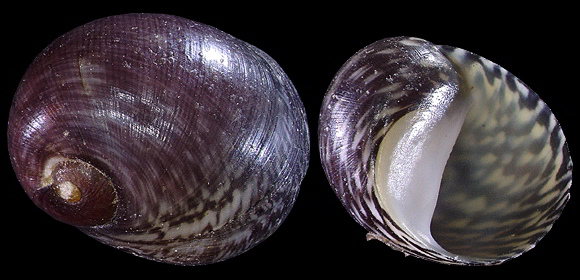
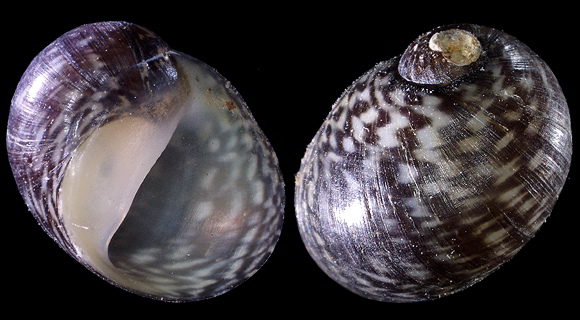
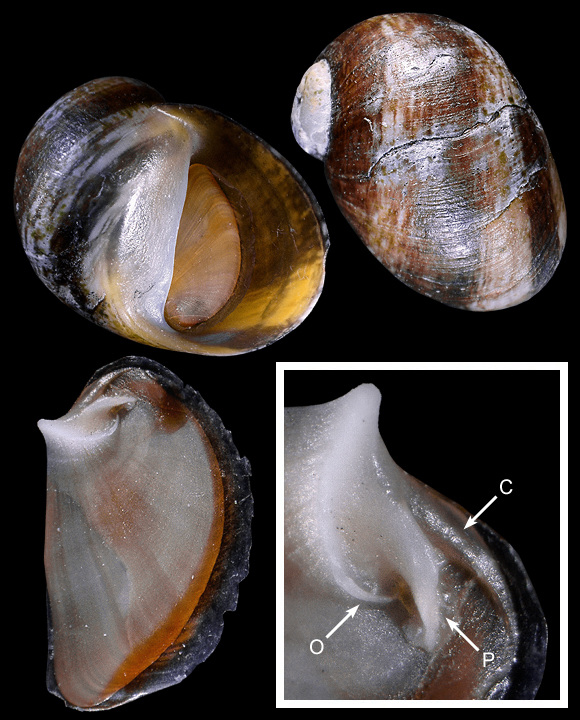

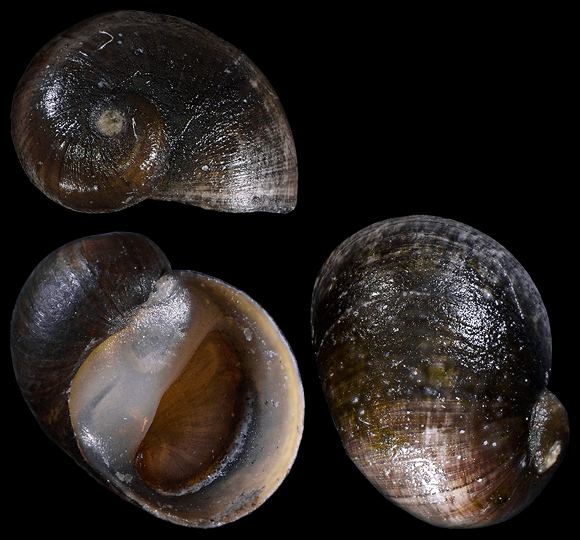
Neritina callosa: shell roundish-ovate, with a slightly prominent spire; aperture half-moon shaped, with a sharp labrum and a smooth, rather wide and thick, pale columellar callus; there is often a marked collabral microsculture; colour and pattern variable. The operculum can be darker than in fluviatilis, but shows the same kind of marginal red band; of course, the main difference with fluviatilis remains the presence of a pseudoapophysis at the base of the apophysis.
On stones in the spring, Ano Kefalári, Dráma prefecture, Eastern Macedonia and Thrace, Northern Greece. 6mm.